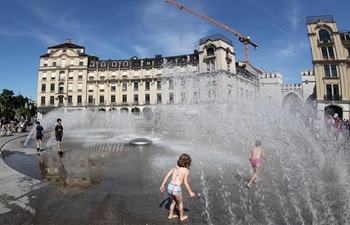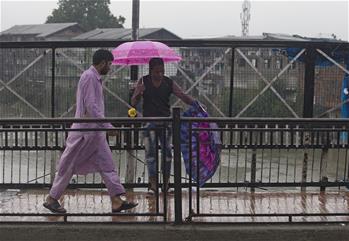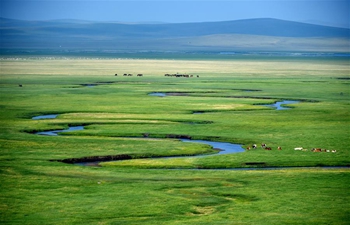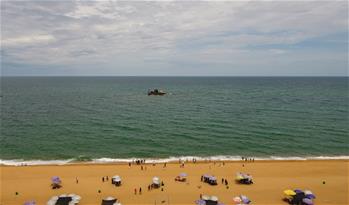ROME, July 25 (Xinhua) -- Italy has suffered from two major volcanic eruptions this month, giving new attention to a type of deadly natural disaster that dates back to pre-historic times. But experts say that does not make it any more likely -- or less likely, for that matter -- that more eruptions will follow.
With eight, Italy has more active volcanoes than any other country in Europe. In recent weeks, two of them have erupted. The first was on the small island of Stromboli, where a hiker was killed and two other visitors were injured after an eruption on July 3. Then, on July 19, an eruption of Mt. Etna, on Sicily, sparked the evacuation of some nearby communities and forced two airports in the city of Catania to close for nearly a day.
According to geologist Enzo Morra from Federico II University in Naples, the two eruptions were unrelated from a geological standpoint. But he also said that had no bearing on how much time will pass before the next eruption.
"Volcanic eruptions are natural phenomena, and that means they are impossible to predict with any precision," Morra told Xinhua. "You can say that a risk is present, or if the risk is increasing. But there is no way to know whether the next eruption will come tomorrow, or in 50 or 100 years."
Even so, Morra and other experts said volcano monitoring systems have improved substantially in recent years. That doesn't make it possible to predict a specific eruption, but it does mean that "scientists can understand how volcanos work better than ever before," Morra said. Technology also makes it easier to warn at-risk groups more efficiently and to evacuate them quicker.
Volcanos have erupted in Italy with deadly results going back millennia. The most famous eruption took place in the year 79 AD, when Mt. Vesuvius, near Naples, erupted and destroyed the city of Pompeii, killing an estimated 15,000 people. Another eruption of Vesuvius, in 1631, killed nearly 3,500 people, and in 1944, 27 people died when the volcano erupted. An eruption of Mt. Etna left 1,500 people dead in 1669 and 56 more people died in 1843.
The general trend is for death tolls from volcanic eruptions to fall over time. But according to Luigi D'Angelo, operations director for emergency coordination with Italy's Civil Protection Department, urbanization means that a major eruption today could result in huge numbers of deaths.
"If you look at Mt. Vesuvius, there are hundreds of people living in houses being built higher and higher up the side of the mountain," D'Angelo said in an interview. "A major eruption there could have very tragic results."
D'Angelo said communities near Sicily's Mt. Etna face similar risks. But the worst risk, according to one study, may come from Campi Flegrei, a volcanic complex of two dozen craters west of Naples that last erupted in 1538. Studies have shown increased activity under the complex, and while there is still no way to know when an eruption could take place, one model reported in the Italian media said an eruption could send waves as high as 30 meters (100 feet) crashing against the densely populated coastline between Naples and Rome.













